メハジキは小さな薄紅色の唇形花が輪生します。和名の由来は昔の子どもたちの遊び。弾力性のある茎を短く切り、瞼に挟んで飛ばしました。
Chinese Motherwort has small pale pink lip-shaped flowers that grow in whorls. The Japanese name means “playing with the eyes”. This is because children in the past used to cut the elastic stems short, hold them between their eyelids, and play with them.
【仮名】メハジキ, ヤクモソウ
【和名】目弾き, 益母草
【英名】Chinese Motherwort
【学名】Leonurus japonicus
【誕生】07/ ??
【開花】07, 08, 09月
【花色】White, Pink, Red, Purple
メハジキ
メハジキの概要
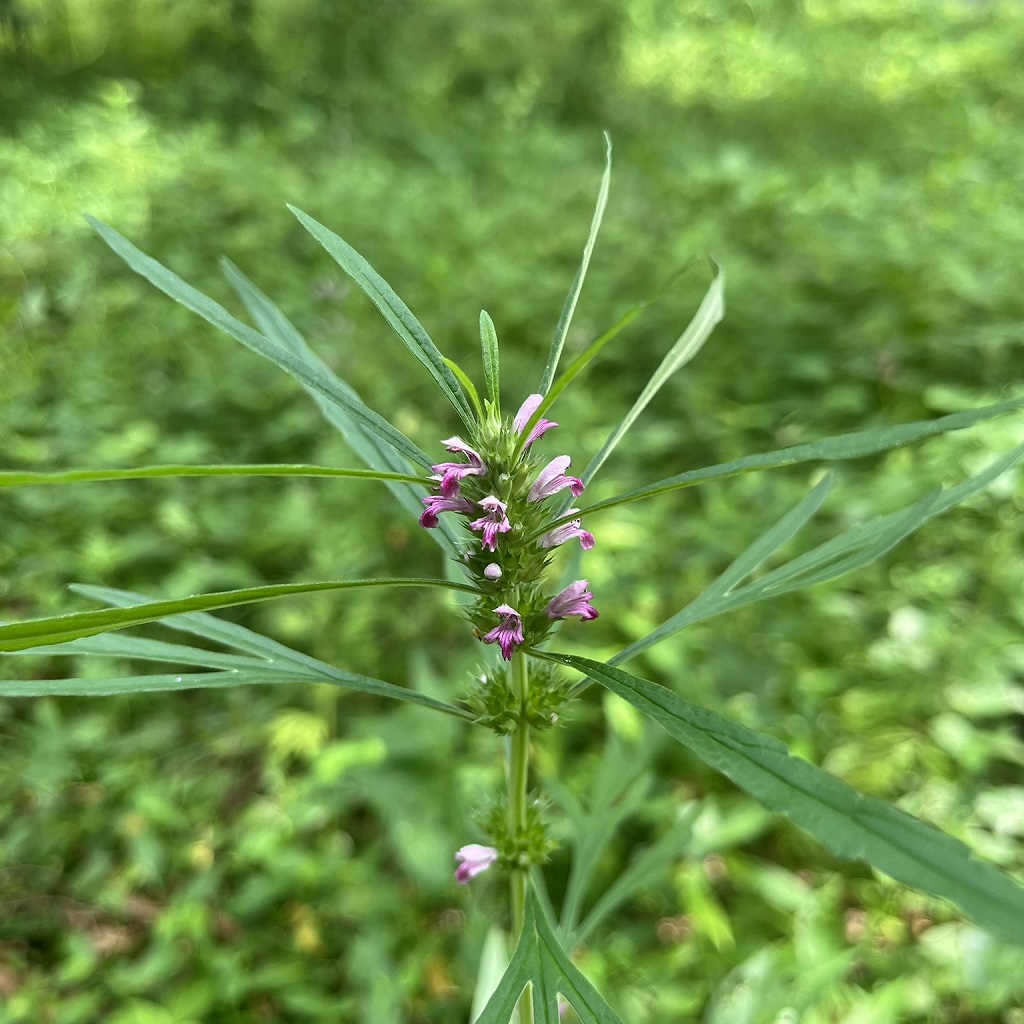
メハジキはシソ科の一年草または多年草です。日本では北海道から本州、四国、九州まで、国外では東アジアから東南アジア、南アジアまで広く分布し、アフリカ大陸やアメリカ大陸でも野生化。陽当たりの良い野原や道端などで、小さな薄紅色の唇形花が茎先の節ごとに輪生します。
メハジキの名前
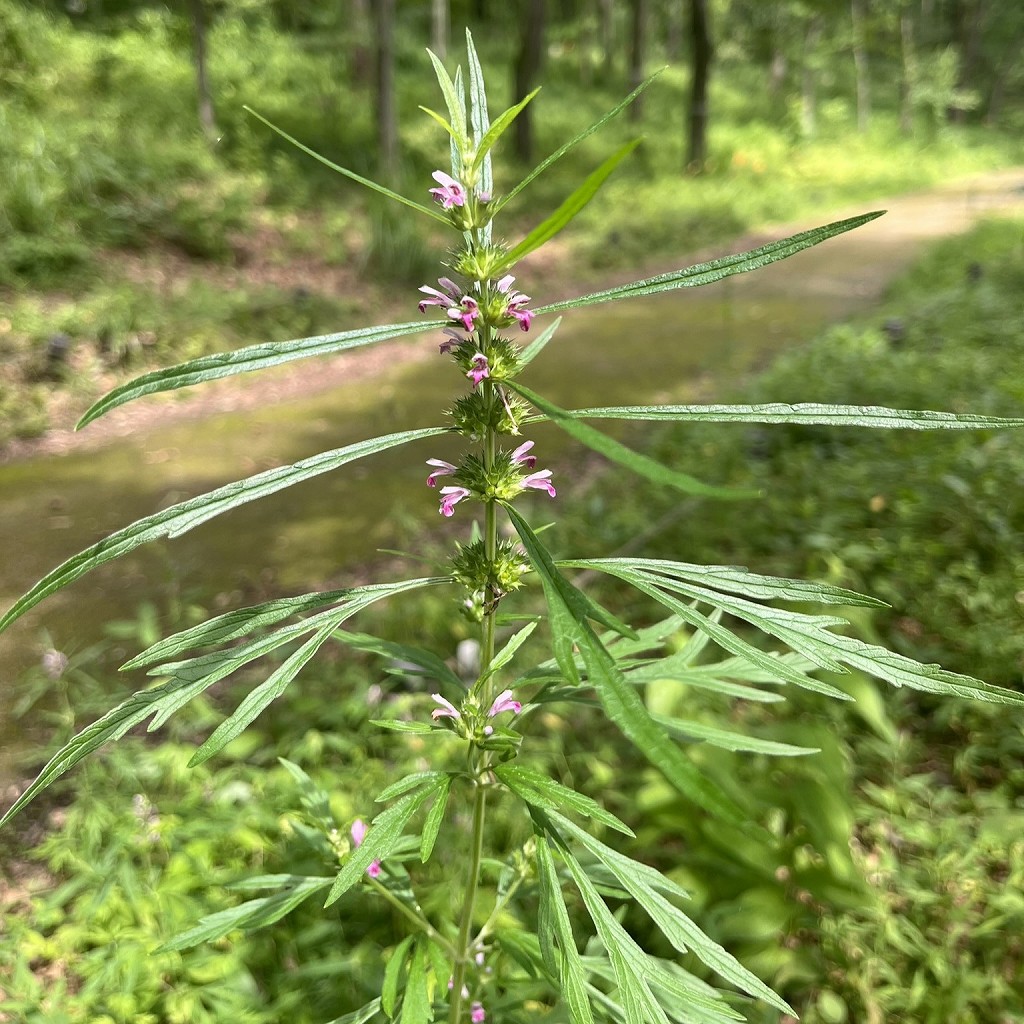
メハジキの和名「目弾き」の由来は昔の子どもたちの遊び。弾力性のある茎を短く切り、瞼に挟んで飛ばしました。別名「益母草」は中国での生薬名で、「お母さんのための薬草」といった意味。ラテン語の属名レオヌルスは「ライオンの尻尾」という意味で、葉の形状に由来します。
メハジキの姿形
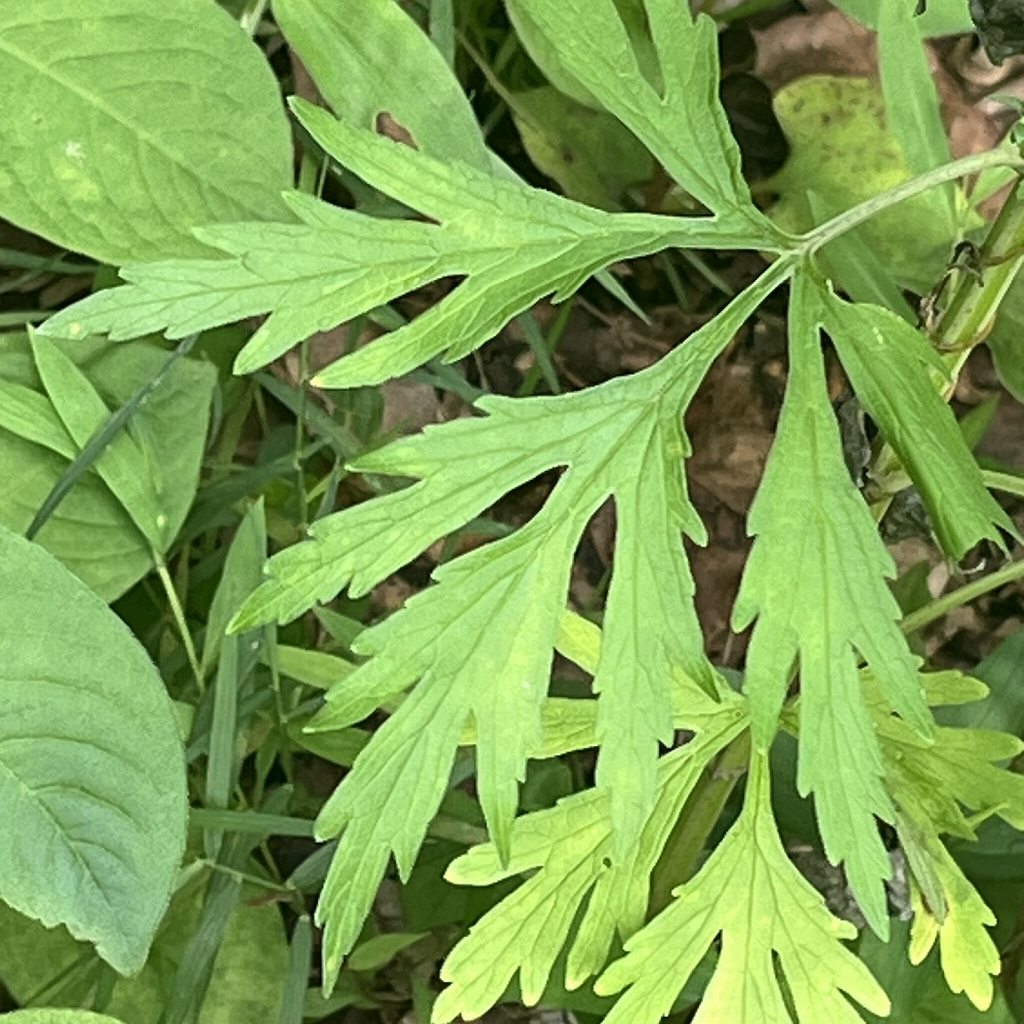
メハジキの茎は四陵で直立し、細毛が密生します。根生葉は柄が長く、切れ込みが深い掌状。茎生葉は対生で上方ほど切れ込みが浅く、細長くなります。花は唇形で上唇が丸く、下唇が3裂、雄しべが4本、雌しべが2裂。花の下に尖った小苞があります。花後は楔形の4分果を形成。
メハジキの利用
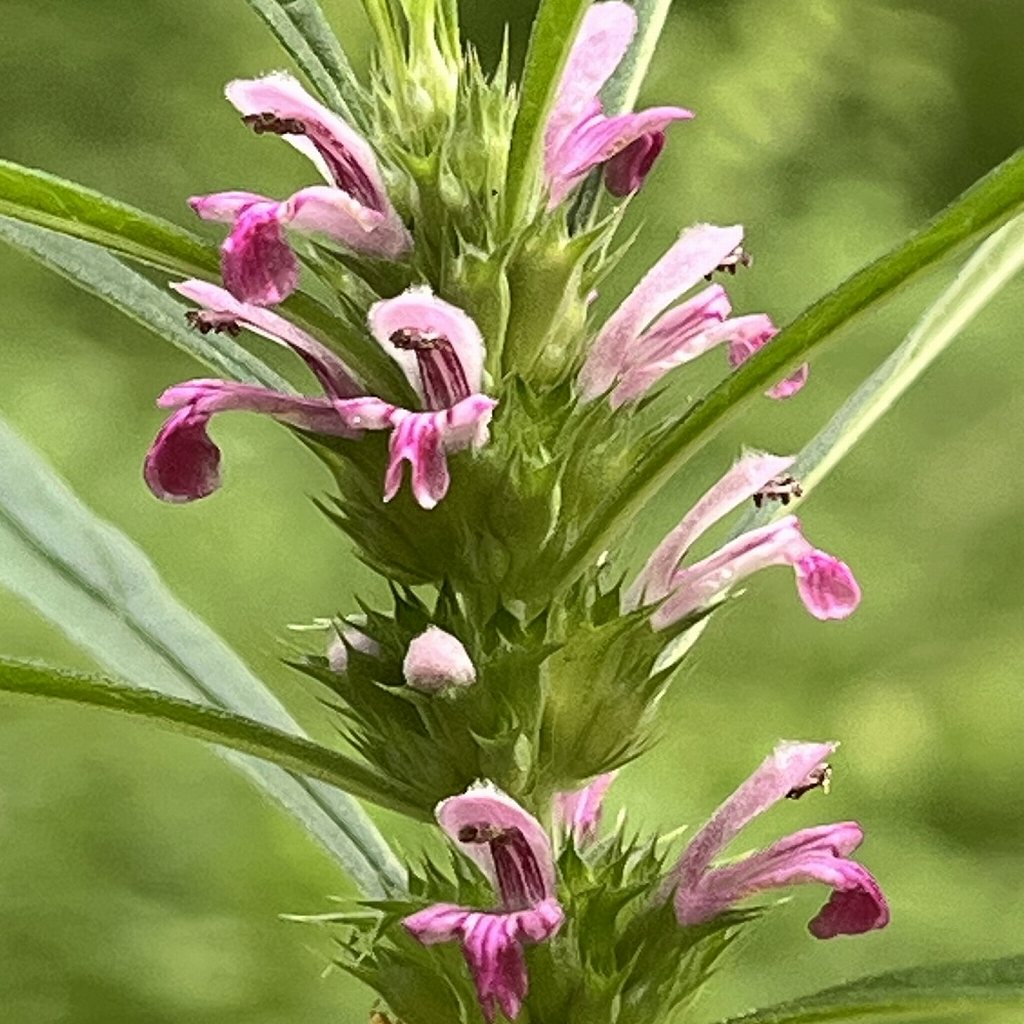
メハジキは、刈り取った茎葉を屋内で干し、刻んだものが生薬「益母草」に。アルカロイドやフラボノイドが含まれ、煎じて産前産後の月経不順、生理痛、眩暈、尿閉などに用いられます。成熟した種子も干したものが生薬「充蔚子」に。むくみ、目の疾患、尿閉などに用いられます。
Chinese Motherwort
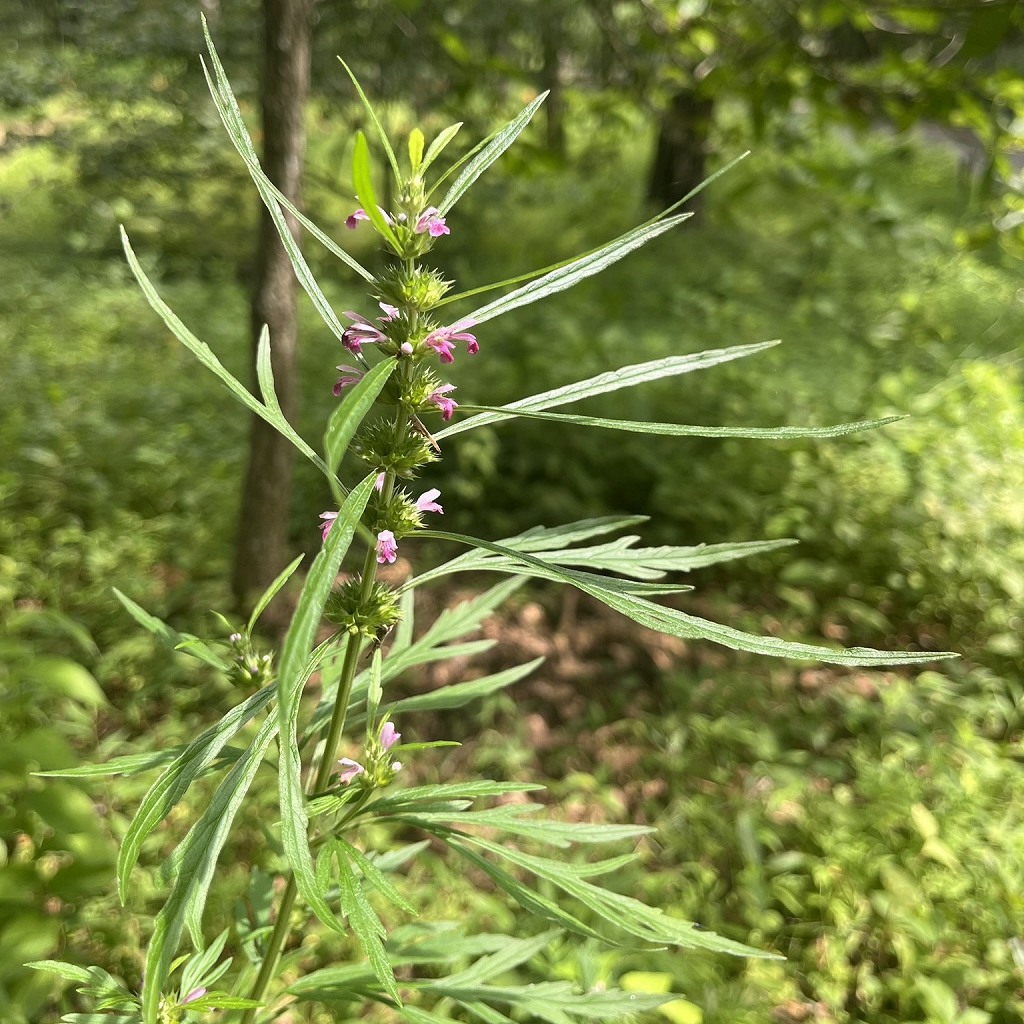
Chinese Motherwort is an annual or perennial plant in the Lamiaceae family. It is widely distributed in Japan from Hokkaido to Honshu, Shikoku, and Kyushu, and overseas from East Asia to Southeast Asia and South Asia, and has also grown wild in Africa and the Americas. In sunny fields and roadsides, small pale pink lip-shaped flowers grow in whorls at the nodes at the end of the stem.
The Japanese name for Chinese Motherwort means “playing with the eyes”. This is because children in the past used to cut the elastic stems short, hold them between their eyelids, and play with them. It also has another name that means “medicinal herb for mothers”. The Latin genus name Leonurus means “lion’s tail” and comes from the shape of the leaves.
Chinese Motherwort stems are four-ridged and upright, densely covered with fine hairs. The basal leaves are long-stalked and deeply incised palmately. The stem leaves are opposite and the incisions become shallower and more elongated towards the top. The flowers are labiate with a rounded upper lip, a three-lobed lower lip, four stamens, and two-lobed pistils. There is a pointed bracteolet beneath the flower. After flowering, a wedge-shaped quarto fruit forms.
Chinese Motherwort is made into herbal medicine by drying the cut stems and leaves indoors and chopping them. It contains alkaloids and flavonoids, and is used in a decoction to treat menstrual irregularities before and after childbirth, menstrual pain, dizziness, and urinary retention. Dried mature seeds are also used as herbal medicine. They are used for swelling, eye disorders, and urinary retention.


